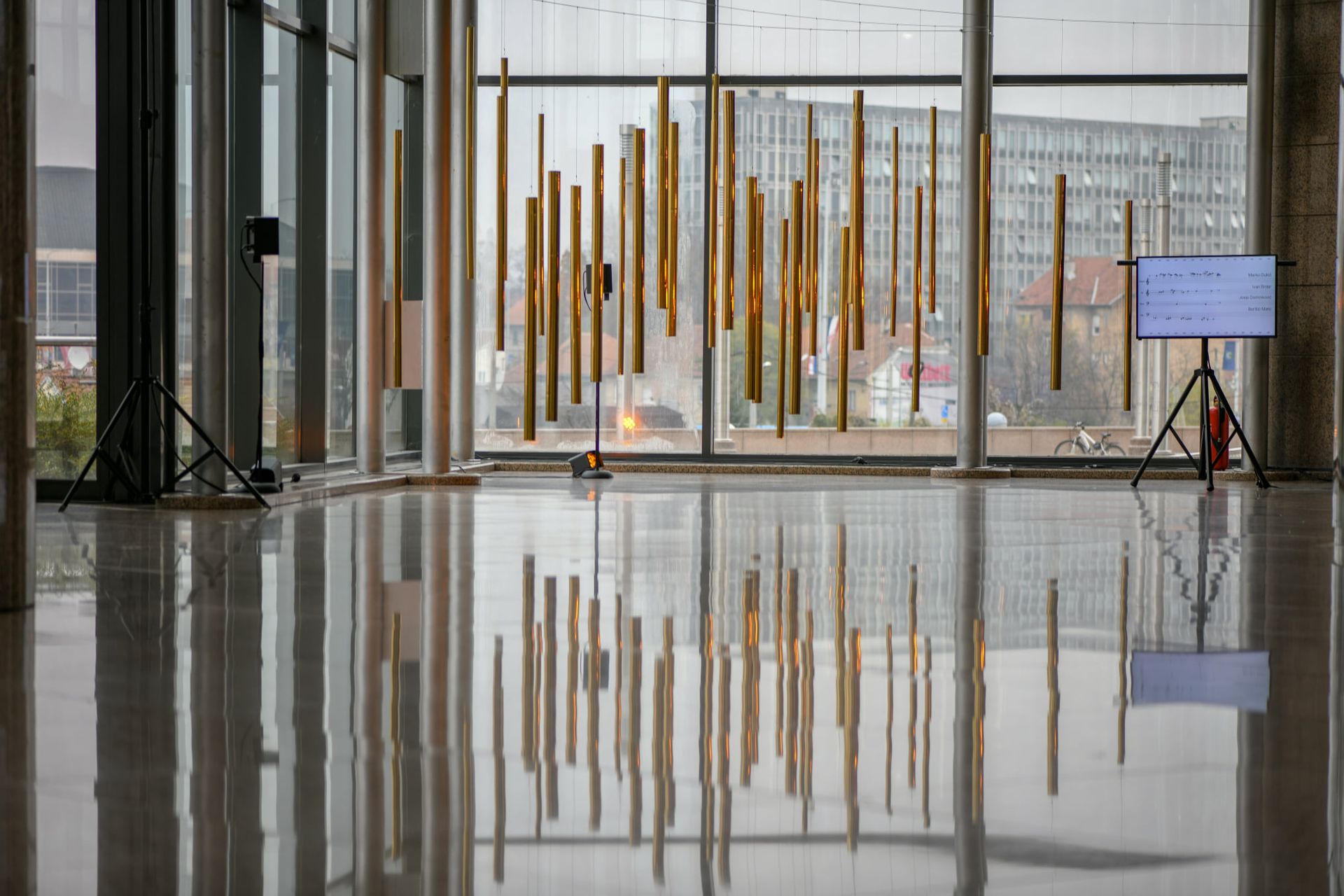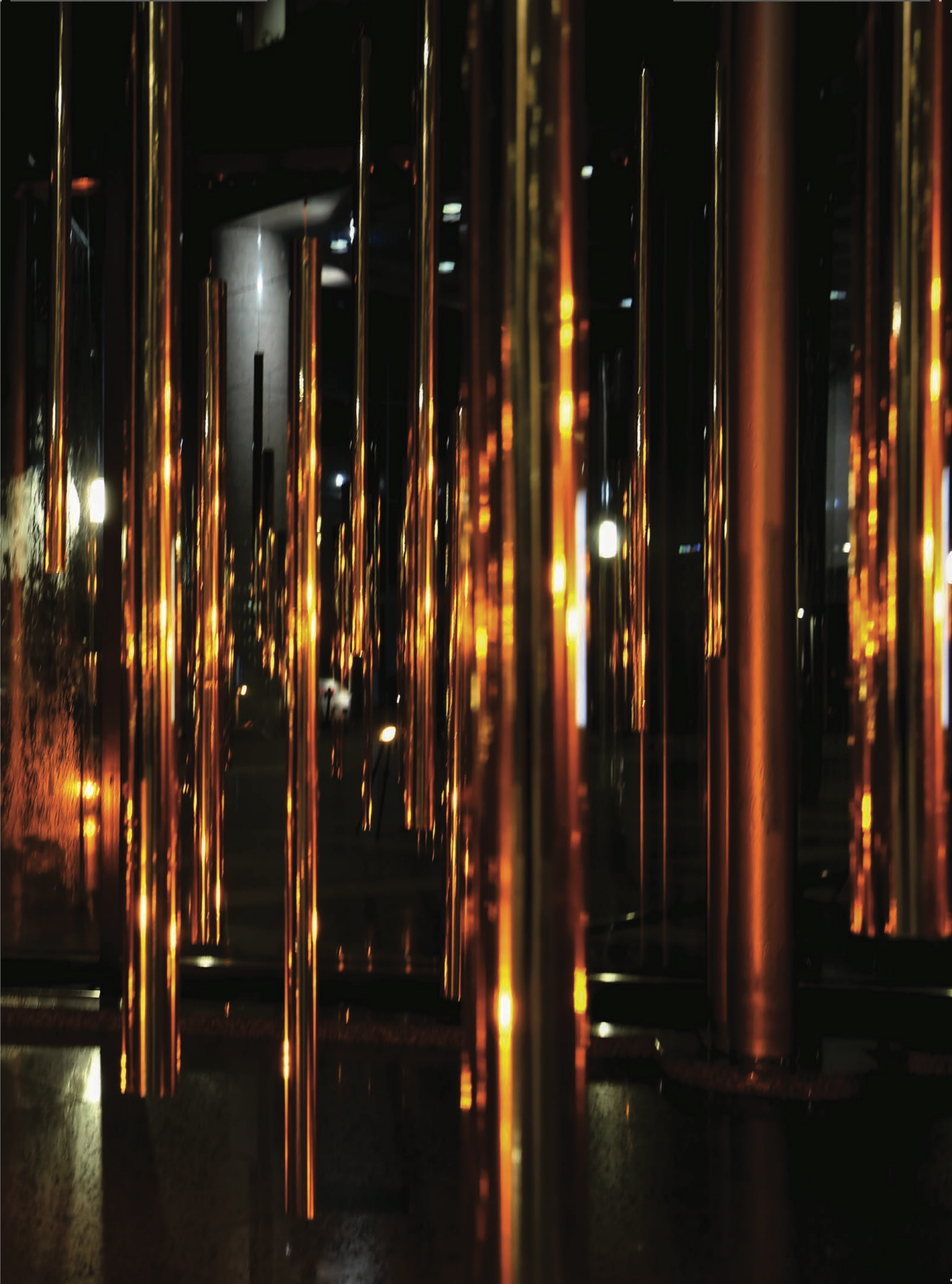
By Ida Blazicko and Alex Brajkovic, National and University Library in Zagreb, Croatia, 2021.
Inspired by the Ancient Greek concept of truth, the work's name A-létheia consists of the prefix "a" which negates the element "léthé" - oblivion. Its central piece is an algorithmic composition that utilizes data from the first complete list of Vukovar war victims, capturing 2,717 names and surnames collected by the Vukovar Franciscans. Though the number of victims is not final, the work stands as a tribute to their memory.
The algorithm draws upon the name and surname of each victim, analyzing the number of letters and alphabetical order, distributing them into four voices: soprano, alto, tenor, and bass. The number of letters in their first and last names determines the pitch and duration of the note created. The composition is a generative one, constantly creating new melodies, harmonies, rhythms, and musical colors.

But the work's power goes beyond its algorithmic composition. Visitors to the exhibition become active participants in the musical experience, completing the generative composition with their movements and touch. As they move through the airy sculpture of thin and delicate metal elements, they add their energy and emotion to the work, becoming a part of its haunting beauty.
In this way, the past and the present are interwoven, and music's role as a universal language is given its full expression. With its pure language of sound and light, A-létheia pays tribute to all tragic victims, capturing the full range of human emotion and experience in a single, breathtaking work of art.